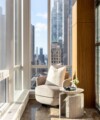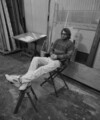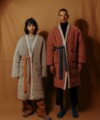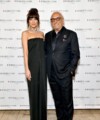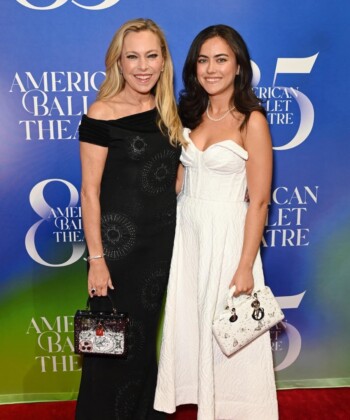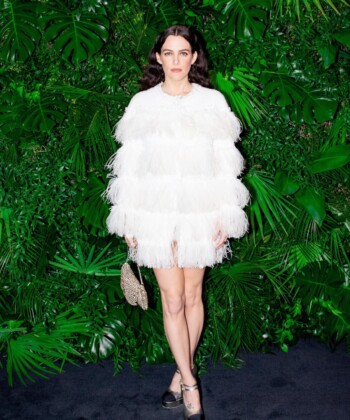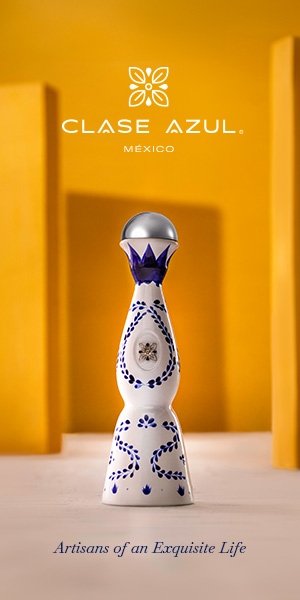To hear him tell it, Jeff Koons keeps the hours of an average businessman. “I’m here Monday through Friday, nine to five,” he says, shrugging, as if the operation he runs out of a former warehouse on Manhattan’s far west side were some ho-hum insurance office and not an extraordinary, Wonka-esque culture factory turning out the world’s most sought-after art.
Koons, of course, is the creator of some of contemporary art’s most outsize work, including his series of 10-foot-high “Balloon Dog” statues, one of which sold in 2013 for more than $58 million, breaking the record for the price paid for a single piece by a living artist. Add to his substantial fortune a seemingly endless chorus of hosannas and, the coup de grâce, his 2014 at the Whitney Museum of American Art—the museum’s final exhibit at its current Madison Avenue home—and there’s no question that Koons is the most successful artist of his time. If all that weren’t already apparent, a visit to the artist’s 33,000-square-foot studio easily hammers home the point.
Visitors walk in off an unimpressive gray stretch of sidewalk and are immediately transported to someplace refined, whimsical and really rather marvelous. At every turn there’s a mesmerizing piece—an oversize painting, an almost-completed sculpture, a pile of heads of familiar superheroes—and what seems like an army of employees (there are 125 in all) working to carry out Koons’ singular vision. But this is no devil-may-care art assembly line. Koons creates a very limited amount of work and is exceedingly serious about every aspect of the creative process.
“I let things resonate for a long time,” Koons says. “Generally what I make today, I have already thought about for at least a year and sometimes two. I have already been thinking about it and whether or not I want to make that gesture.”
Most of that thinking, Koons says, takes place in his office—a shared room littered with Macs, art books and miniatures of his sculptures that buzzes with activity even when the boss sits down for an interview.
“This is where I come to work,” he explains. “I tend to work on paintings here. We do two-dimensional design in this office, and in the next room we develop things to 3D. If I’m working on a sculpture, after I get the basic design and scale, we go into the next room over and start to develop models.”
A 3D studio isn’t the only upscale perk of the workspace, however. Koons is a fitness fanatic who, with his wife, Justine, has six young kids to keep up with, so he keeps a gym on the building’s second floor in order to meet his personal trainer for a daily appointment.
“I train every day, five days a week,” Koons says. “I have a complete gym here and I have a trainer who comes and works with me. Bringing your body and mind together is very important. For me, it’s very freeing.”
Something has to be, considering Koons’ extensive obligations. While the artist does employ a lot of help, he’s involved in each piece in the studio and considers every action on his behalf to be his own.
“I’m responsible for everything: It’s up to me to educate my staff, and I really have to be able to watch everything from a distance,” he says, explaining how he keeps the studio running smoothly. “If I pick up a water bottle and move it, I am telling my hands to do that and I am the one moving it. It’s the same thing working with a staff: I’m just informing them that I would like to take this and move it from here to there. I’m really not that removed.”
It’s a system that clearly works for Koons, who’s also dabbled in high-end collaborations, like creating a set of $20,000-per-bottle sculptures for Dom Pérignon. With the biggest exhibit of his career only weeks away from opening, Koons seems remarkably calm. “We’ve been working on [the exhibition] for approximately two years and a lot of work has gone into this project,” he says. “Now it’s actually less and less work every day because we have so much done already. We know exactly what it’s going to look like and we’re just thrilled.”
Of all the works of art a visitor can see at Koons’ studio, the most impressive creation just might be the cool, collected demeanor of the man himself. Sure, he’s organized and efficient and undeniably at the top of his game, but beneath the surface he admits to being just as wowed by the spectacle of his studio as anyone else.
“I feel very lucky to have this,” he says, walking off to his next appointment. “Sometimes I have to pinch myself just to believe it’s real.”
Take a look through the DuJour gallery above for an exclusive peek into Koons’ studio.









